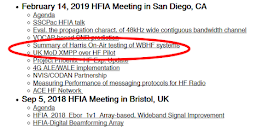Australian Defence Force (ADF) Modernised High Frequency Communications System (MHFCS) is a managed, long-range strategic communications system that enables the secure exchange of information, such as voice, e-mail, facsimile, interactive data and organizational messages, between fixed and mobile stations using one integrated system. MHFCS features automated priority messaging, an assured delivery system, extensive geographic coverage that includes2,000 nautical miles offshore, and automated frequency-management and traditional-operator tasks.
The fixed network comprises four remotely located radio stations referred to as Nodes. The Nodes are situated in the Townsville, Darwin and North West Cape areas; and the Riverina region (see Figure 1):
NORTH WEST CAPE, WA (S22.20 E114.30)
DARWIN, NT (S12.22 E130.59)
TOWNSVILLE, QLD (S19.28 E146.25)
RIVERINA, NSW (S35.01 E146.25)
 |
Fig. 1 - MHFCS nodes
|
Each Node comprises two sites, a Receive site and a Transmit site situated approximately 50 kilometres apart, with a Local Management Facility located at one of these sites. The Local Management Facility within a Node manages the radio assets located at the Receive and Transmit sites. Inter-Site Links connect the Transmit site to the Receive site within a Node. The Nodes are connected by Inter-Node Links to the Network Management Facility that acts as the control access point for all communication traffic to and from external and mobile users.















